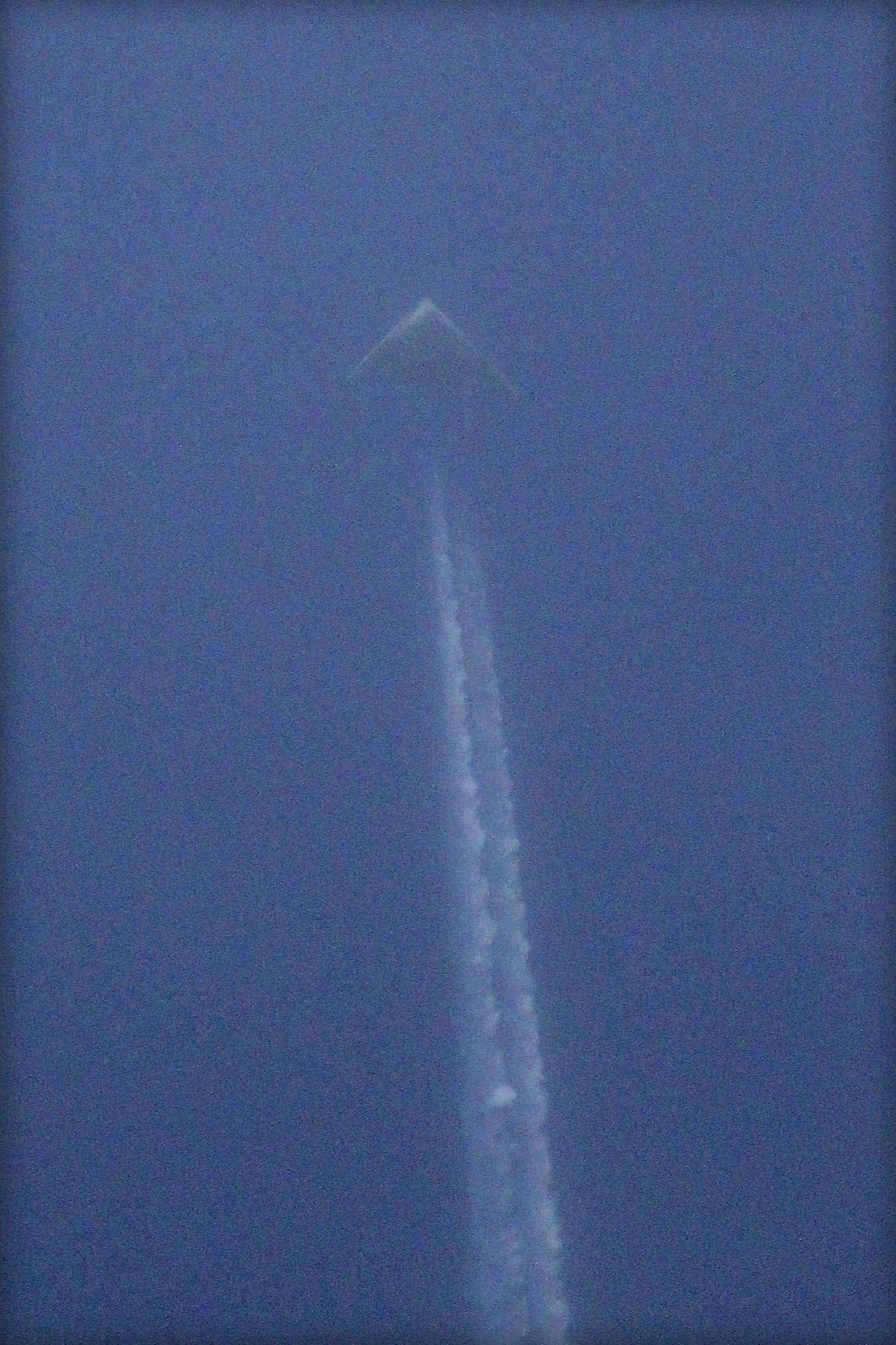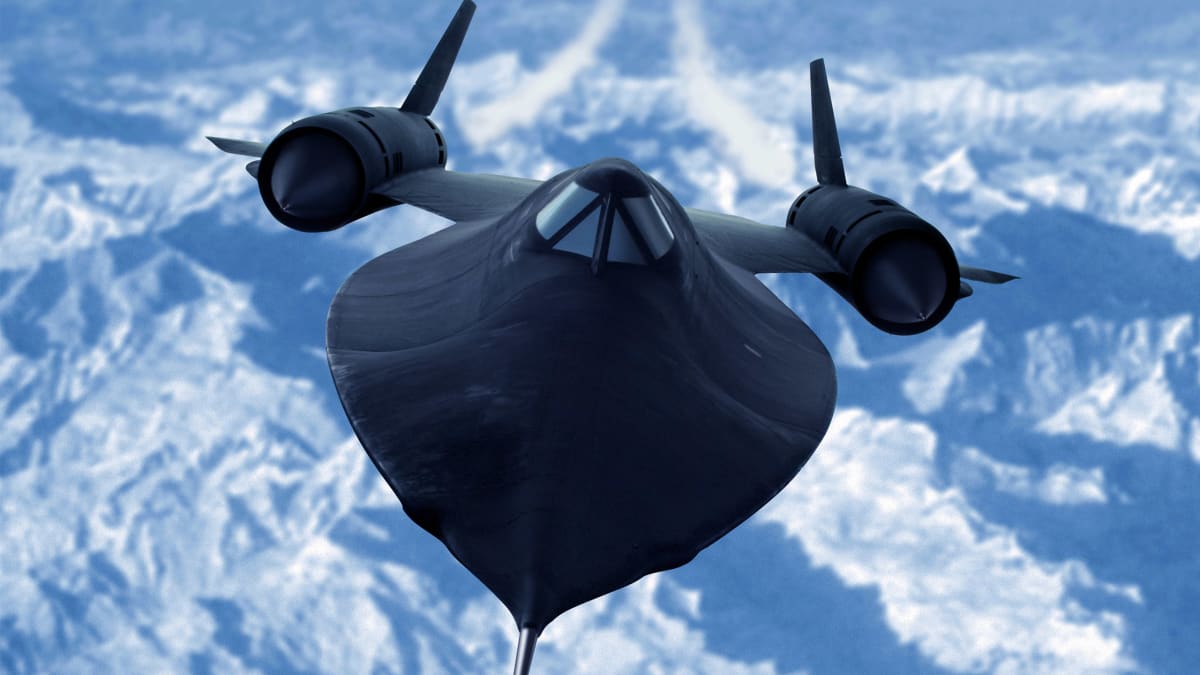Spy Plane Names - In 1955, the Central Intelligence Agency, the US Air Force and defense contractor Lockheed Martin chose a very remote location in the Mojave Desert in southern Nevada, about 80 miles northwest of Las Vegas, to begin testing and developing the newest, most advanced aircraft of the world at that time
For decades, the Nevada test and training site, better known as Area 51, did not appear on any public map, and the US government did not even acknowledge its existence. Due to the tight security around the site and the experimental nature of the "black plane" that was tested there, rumors of unidentified flying objects, captured aliens and other mysterious activities have been circulating around Area 51 since the 1950s.
Spy Plane Names

But even if alien-made UFOs never took to the skies above the salt flat known as Groom Lake, we now know—thanks in large part to declassified CIA documents—that some very sophisticated, very unusual aircraft were developed and tested there. From Cold War era U-2 surveillance planes to purely experimental ones
F 35: Why Germany Is Opting For The Us Stealth Bomber
In the early 1950s, at the height of the Cold War, the CIA began a secret effort to develop a surveillance plane that could climb 70,000 feet, high enough (it was believed) to avoid detection by Soviet radar. The result, codenamed Project Aquatone, was the U-2, a single-engine, glider-wing aircraft designed by Clarence "Kelly" Johnson, founder of Lockheed Martin's Advanced Development Projects (better known as Skunk Works). . Lockheed built the plane at its Skunk Works headquarters in Burbank, California, in just eight months, then sent it for testing at Area 51, which Johnson called "Paradise Ranch."
Before the U-2 was ready to fly, Lockheed engineers had to find a fuel that would not evaporate at the high altitudes at which the aircraft was designed. To meet this challenge, Shell Oil Company produced a special low-volatility gas fuel using the petroleum by-products it normally uses in its "Flit" fly and insect spray. Also, the technology behind the airtight suits designed to keep U-2 pilots alive at such high altitudes would later play a key role in the manned space program.
The U-2 (coincidentally) made its first test flight over Groom Lake on August 1, 1955, and less than a year later flew over the Soviet Union for the first time, becoming "immediately the most important source of intelligence about the Soviet Union." " according to a now-declassified CIA report. However, there was a price: In 1956, three CIA pilots died during U-2 test flights, including two at Area 51 and one at an air force base in Germany. In May 1960, the Soviets shot down a U -2 over the Russian city of Sverdlovsk, capturing its pilot, Francis Gary Powers, and forcing the US to admit they were spies.While President Eisenhower ended all U-2 flights over the Soviet Union, plans for a smaller, faster - and more stealthy - a plane was already in the works.
Project Oxcart, launched in 1957, produced two of the fastest and highest-flying aircraft in the United States: the single-seat Archangel-12 and the two-seat SR-71 Blackbird. The A-12 had two jet engines, a long fuselage and a distinctive cobra appearance.
The Élite Heat Of “blackbird Spyplane”
The first completed A-12 arrived at Area 51 in February 1962 after being dismantled in Burbank and transported to Nevada in a specially designed trailer that cost nearly $100,000 (more than $830,000 today). To keep the existence of the A-12 a secret, the CIA informed the head of the Federal Aviation Administration (FAA), who ensured that air traffic controllers were ordered to send written reports of unusually fast, high-flying aircraft rather than mention. such sights on the radio. However, reports of UFO sightings around Area 51 reached new heights in the mid-1960s, writes Annie Jacobsen in Area 51: Uncensored About America's Most Secret Military Base, starting just after the A-12 made its official first flight over Area 51 in April. 1962
Declared fully serviceable in 1965, after reaching a sustained speed of Mach 3.2 (just over 2,200 mph) at 90,000 feet, the A-12 began flying over Vietnam and North Korea in 1967. It was discontinued the following year in favor of its Air Force successor, the SR-71 Blackbird.
A US Air Force SR-71A aircraft, also known as a Blackbird, is tested during a test flight over Beale Air Force Base in California. The aircraft is Lockheed's strategic surveillance aircraft and is the fastest and highest-flying operational aircraft in the world.
:max_bytes(150000):strip_icc()/airplane-flies-overhead-IDPLANES0118-7481b6bb6e684e0c96a8b84a595ff8ee.jpg)
Longer and heavier than the A-12, the SR-71 combines supersonic speed with a low radar profile due to its sleek, narrow design and radar-absorbing black paint. On July 28, 1976, pilots flew the SR-71 at a record speed of Mach 3.3, or 2,193 miles per hour. At 400 feet per second, it was literally faster than a speeding rifle bullet. Decommissioned in 1990 after more than three decades of service, the SR-71 remains the fastest aircraft in the world.
Code Name \
In addition to testing new aviation technology, Area 51 was also used to study foreign military aircraft that the US government secretly acquired during the Cold War. In the late 1960s, according to now declassified CIA documents, the Air Force received a Fishbed-E, a Soviet MiG-21 fighter jet that was loaned to the United States after an Iraqi pilot used it to defect to Israel. As part of the program, codenamed Have Doughnut, Area 51 personnel tested and engineered the Mach-2 fighter to learn how it performed and compare it to individual American fighters.
During 40 days in 1968, American pilots made 102 test flights on the MiG, gaining 77 hours of total flight time. They found that while the Soviet plane was slower than American planes such as the F-5 and F-105, it had a smaller turning radius than both; this finding led analysts to warn American pilots to avoid "protracted maneuver battles" or dogfights.
Area 51's top-secret MiG program paid off in the skies over Vietnam, where US Air Force pilots ended the war with an overall casualty ratio of two to one, downing a total of 137 Soviet-made MiGs. It would also lead to the now famous Top Gun fighter pilot school, established in 1969.
In the 1970s, Area 51 produced the nation's first secret bomber, the F-117 Nighthawk, developed by Lockheed Skunk Works under the code name Have Blue. The F-117, with its faceted, diamond-shaped surface designed to reflect and disrupt radar beams, could be mistaken for the boomerang-shaped UFOs that were a fixture of the public imagination as far back as the 1940s.
North Korea Shot Down A U.s. Spy Plane In 1969. Nixon's Response Might Appall Trump.
Although the futuristic alien aircraft first flew over Area 51 in June 1981, it was not publicly revealed until late 1988, spending seven years in secret as one of the Pentagon's most valuable black projects. After bombing high-value targets throughout Baghdad to launch Operation Desert Storm in early 1991, the F-117 served US forces in Afghanistan and again in Iraq before being decommissioned in 2008. However, an unknown number are still flying.
In the 1990s, Boeing developed its own top-secret Birdodeprey aircraft as part of a project run by the Air Force at Area 51. A research aircraft that was never intended for production, the hawk-like YF-118G was named. for its resemblance to the battleship used by the Klingons in the 1984 film
Its purpose was to test various aviation technologies and ways to make aircraft less visible to the eye and less detectable by radar.
A raptor first flew from Area 51 in 1996; it completed 38 flights before the program was terminated in 1999. It was declassified a few years later, and Boeing donated the plane to the National Museum of the United States Air Force, although it continued to keep many of the most mysterious aspects of the plane secret.
Code Name Verity,' By Elizabeth Wein
FACT CHECKING: We are committed to accuracy and fairness. But if you see something that doesn't look right, click here to contact us! regularly reviews and updates its content to ensure that it is complete and accurate. A surveillance aircraft (colloquially spy aircraft) is a military aircraft designed or adapted to perform aerial surveillance with roles including image collection (including the use of photography), signals intelligence, and signature measurement and intelligence. Modern technology has also enabled some aircraft and drones to conduct real-time surveillance in addition to gathering general intelligence.
Before the development of devices such as radar, the armed forces relied on surveillance aircraft for visual surveillance and notification of enemy movement. An example is the PBY Catalina naval patrol plane used by the Allies in World War II: A flight of US Navy Catalinas spotted part of the Japanese fleet approaching Midway Island, beginning the Battle of Midway.
Until the 20th century, electric and controlled flying vehicles were not available to the armed forces, but some attempts were made to use lighter than airplanes. During the Napoleonic Wars and the Franco-Prussian War, balloons were used by the French for aerial surveillance.
In World War I, aircraft were deployed in the early stages of combat in patrol roles as the "eyes of the army" to assist ground forces.
Hermeus: Hypersonic Aircraft Designed To Fly From Nyc To London In 90 Minutes
Antenna
Spy hawk rc plane, spy plane, u 2 spy plane, u2 spy plane images, sr 71 spy plane, u2 spy plane model, u2 spy plane pictures, military spy plane, rc u2 spy plane, tr 1 spy plane, u2 spy plane cockpit, lego u2 spy plane

0 Comments